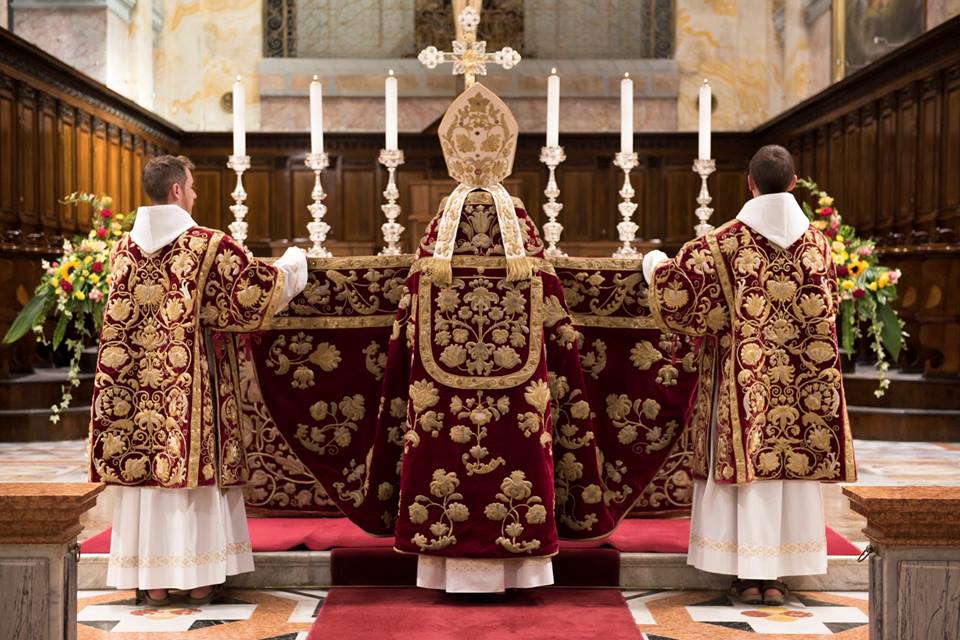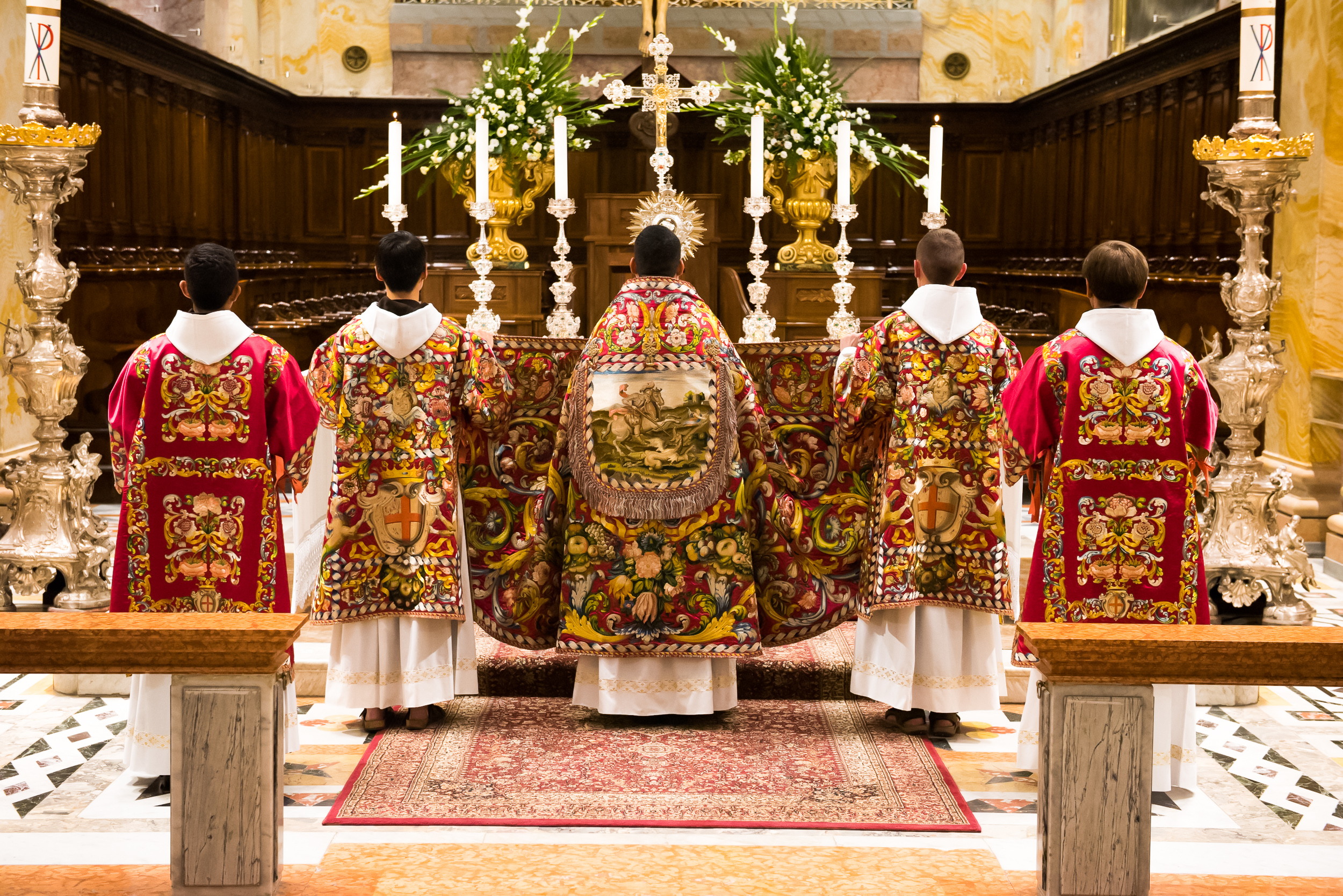The Treasury of the Holy Sepulchre unveils its collection of liturgical vestments.
Testaments to the dedication of Europe’s sovereigns to the Holy Land, the Custody’s liturgical vestments have attracted the interest of numerous art historians, whose study will help choose pieces for the future historical wing of the Terra Sancta Museum. Benoit Colin, specialist in the history of medieval art and Christian archeology, recounts for us how this precious collection, comprising some of the most beautiful products of Europe’s ateliers since the 16th century, was collected, and what makes it so unique.

Ornaments offered by the Republic of Venice, 1669
A volunteer in the office of cultural heritage at the Custody of the Holy Land in 2018, Benoit Colin has worked for a long time on the vestment collection. Now a teacher at the Ecole du Louvre in Christian Archeology and Byzantine Art, he contributed to the redaction of the catalogue of vestments at the Terra Sancta Museum.
How was the Custody’s collection of vestments built up?
When the Franciscan Order was established in the Holy Land in the 13th century, it was the only organized Christian presence in the Holy Land, apart from the Eastern Churches. The European Catholic powers—principally France, the Italian principalities, the kingdom of Spain, the Holy Roman Empire, the Austrian Empire, and Portugal—were dealing with the only partner they had when they sent gifts to the sanctuaries of the Holy Land (the Holy Sepulchre, etc.). Hence the Franciscans became the guardians of the gifts they sent. So beautiful were the gifts that the kings would compete with each other to send objects of surpassing quality. All of the gifts would be entered into an import register, which provides us with an overview of the collection. From the 17th century up to now, the sanctuaries have guarded the gifts they have received, and they continue to wear some of the liturgical vestments on certain occasions.
What is unique about the collection?
First of all, this is an exceptional collection for many reasons. First is that this collection is quite old but has never been destroyed or pillaged. It gathers together the most beautiful pieces—from the point of view of skill and artistry—of Europe’s workshops from the end of the 16th century to the beginning of the 21st century.
Second is that one does not find pieces like these in Europe. I am thinking, for example, of a collection from Louis XIII and Anne of Austria embroidered from cloth of gold, evidence of the types of embroidery in the royal ateliers in 17th century France. Moreover, the gifts of the king were well documented—something most interesting for art historians!
Considering decorations that are so old and still used, one what is their state of preservation?
Actually, it is very well preserved! If this is so, it is chiefly because the friars have taken good care of it. Recently, they have undertaken an important work of conservation: covering the linens in silk paper, inventorying the works, etc. There is also a sort of preservation through use. I mean that the more an object is used, the more it is protected. The object stays living, so to speak. Sometimes it happens that a work deteriorates once it reaches a museum, even if the conditions for conservation are perfect (due to change in climate, use, etc.). In this museum, the works will be displayed and yet will continue to be used. Thus they stay living.
What makes a liturgical vestment excellent? How do you judge its quality?
The most beautiful works are not necessarily the oldest. Thus when studying chasubles, we focus on the technical aspects and the fabrics used to make them. For example, if it is made of damask or silk, the threading techniques will be different. Embroidery can be very complicated depending on the thread used (gold or silver). One of the most beautiful sets was donated by the Republic of Genoa in the 17th century, entirely embroidered in silk thread that forms a needlepoint painting. This means that it gives the impression of having been painted, though it is not painting but silk thread. This type of embroidery is all the more exceptional because silk thread was very precious, especially when done in so many colors. The set containing 36 pieces (chasubles, dalmatics, copes, etc) is in a remarkable state of conversation. It looks like it was made yesterday!
In displaying European liturgical vestments in a museum in Jerusalem, is it the Custody’s intention to shed light on the links between the West and the Holy Land?
Definitely! From several points of view. The dedication of sovereigns to the sanctuaries of the Holy Land, first of all. For example, when Louis XIV gave chalices to a sanctuary, he showed France’s dedicated to the Holy Land. When Emperor Franz-Josef went to the Holy Sepulcher, it was all of Austria came to Jerusalem with him. While being at the service of the local population and the sanctuaries, and preserves the gives made by European nations across the centuries, the Custody was a bridge between the Holy Land and the West. It was the point of contact between European sovereigns and the sanctuaries of the Holy Land. In creating the museum, the Custody reminds us of this ancient link between the two.

Pontifical ornaments offered by the Republic of Genoa, 1686-1697



